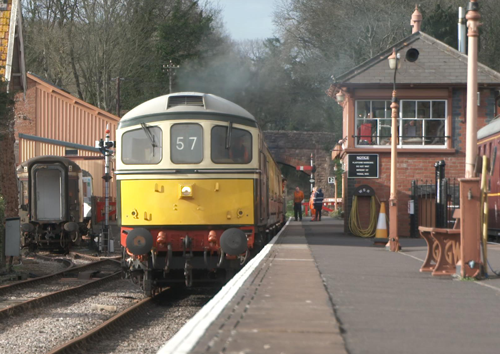Rail safety system demonstration shows importance of agile innovation
New train technology is being demonstrated to stakeholders that could make the UK rail network safer for track workers, train crews and passengers.
Thales is working with Network Rail and the West Somerset Railway (WSR) to run a live demonstration of its Train Protection and Warning System - Continuous Supervision (TPWS-CS). An audience representing Network Rail, RAIB, ORR, supply chain, train operating companies and rolling stock owners will observe the digital, in-cab system put through its paces in real world scenarios on the 7th of April.
TPWS-CS builds on radio-based limited supervision (RBLS) system, which is currently being defined by Network Rail and industry. The new system continuously updates a train’s position and warns the driver when approaching a stretch of track closed for maintenance or under speed restrictions, applying an emergency brake if necessary. The system enables the Person in Charge of Possession to apply specific permitted movements to trains within the possession, which will be automatically supervised by the TPWS-CS to warn the driver or apply the brake when necessary. The driver can receive updates in their cab constantly, without the need for trackside infrastructure.
Alex Stockill, Product Line Manager at Thales, said:
This is a proof-of-concept demonstration, to show that this is something that exists, not an unrealistic idea. When we tell engineers what we plan to do, their reaction is that it’s too good to be true but this demo will show that the technology does exist and it works.
He added: “We want to come out of the demonstration with the confidence of Network Rail and other potential customers. We think this system, if deployed across the UK, can make a big difference.”
The technology
The system consists of three core elements: continuous positioning sensors, including radar, a Global Navigation Satellite System (GNSS) and inertial measurement unit (IMU); an interface for communicating with the driver; and access to the emergency braking system through the existing Train Protection & Warning System.
TPWS-CS initially warns the driver if the train is approaching a track possession, an area of track taken over by a maintenance crew with restricted access or speed limit. If the train is in danger of breeching its movement authority, the system automatically applies a brake.
TPWS-CS gives controllers the ability to set movement rules around a possession, either a 0 mph rule at the boundary or allowing specified trains, for example an engineering train, to enter to a certain extent and at a fixed maximum speed. This enables controlled moves of engineering trains within worksites.
The demonstration

The equipment will be fitted in a day to a classic diesel cab owned by West Somerset Railway (WSR), a heritage railway company, which also manages the track being used for the demonstration. Display boards on the carriages will show guests the train’s position and speed and repeat the driver’s-eye view of the cab interface.
“It’s been really good working with WSR,” said Alex. “They’ve also given us access to their track so we could carry out testing in safe conditions.
“It’s taken very little time to arrange because they are in total control of their own track, so we’ve been able to react quickly and collaboratively with them.”
The first part of the demonstration will be a series of runs at various speeds under differing restrictions and movement authorities, testing the system’s response and how the train behaves as it approaches a possession applied to the track. The second half will be a presentation of other applications possible for the system.
Innovation and collaboration
Thales has also shown that the TPWS-CS system can be fitted and integrated quickly and cheaply into a cab. The system has been installed as part of Thales’s Robust Train Positioning System on an in-service GWR Class 150 cab, which is acting as a rolling laboratory to gather data.
“These demonstrations have been down to strong collaboration between all of the stakeholders,” said Alex. “To continue innovating for the future, we have to continue working collaboratively and quickly on projects like this, which we’ve been able to set up and demonstrate inside of six months.”


